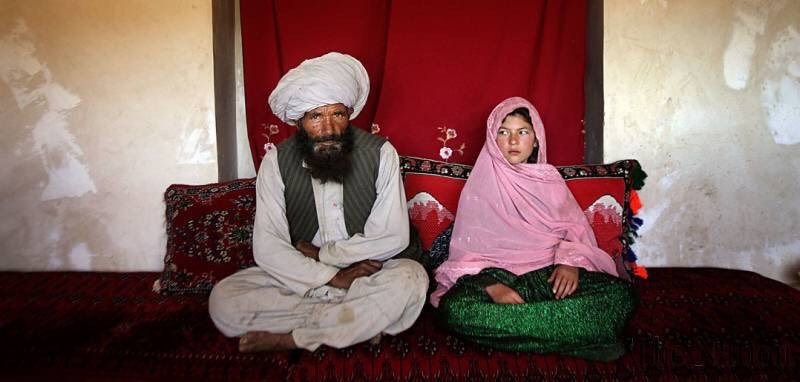By Najma Naseem
(Advocate High Court)
The parents as a guardian by the law of nature are responsibility for the care and protection of children. Parental responsibility is defined as “all the rights, duties, powers, responsibilities and authority which by law a parent has in relation to the child and his property.
The State, as “parens-patriae”, has the duty to promote respect for the dignity of all children and the full exercise of their rights. It also provides that the children have the right to satisfy their nutritional, health, educational, and recreational needs.
It is also the duty of the State to make legislature for the protection of children and deter potential violator of law.
Pursuant to Article 25 (3) of the Constitution of Pakistan, 1973, Pakistan is under an obligation to safeguard and protect the rights of children.
A. Child definition:
Despite the a general provision given by the Majority Act 1875 following which minor is a person who has not attained the age of 18 years, the definition of the child and the fixation of the minimum age for certain activities such as marriage are problematic in some of the laws enforce Pakistan.
(i) Under Juvenile Justice System Ordinance 2000, Child means a person who at time of commission of an offence, has not attained the age of 18 years.
(ii) Under Guardian and Wards Act “a minor/child is any person who has not completed 18 years of age”
(iii) Under the Majority Act 1875, minority ceases upon the completion of 18 years;
(iv) Pakistan ratified United Nations Convention on the Rights of the Child (UNCRC) on November 12, 1990 which provides broader outlines for the promotion and protection of child rights. Every person below the age of 18 years is a child under the UNCRC.
B. Laws related to Child Marriage in Pakistan:
(i) The Child Marriages Restraint Act, 1929
(ii) The Punjab Children Act, 1952 (passed a child rights law that would come into force when so notified by the provincial government. In 31 years, this notification was never issued)
(iii) Punjab Children Ordinance 1983 ( Punjab Children act was replaced by the Punjab Children Ordinance with a similar condition, and again the notification was never issued)
(iv) The Punjab Destitute and Neglected Children Act, 2004 repealed the Punjab Children Ordinance, 1983
(v) Sindh Children Act, 1955
(vi) Sindh Child Marriages Restraint Act in 2013
(vii) Punjab Child Marriage Restraint (Amendment) Act 2015
(viii) Khyber Pakhtunkhwa and Balochistan governments are also currently drafting their own child marriage acts
(ix) Dissolution of Muslim Marriages Act, 1939
(x) Muslim family laws Ordinance 1961
(xi) West Pakistan Muslim Personal Law (Sharia) Application Act, 1962
(xii) Juvenile Justice System Ordinance 2000
(xiii) Juvenile Justice System Act (JJSA) 2018
(xiv) The Hindus Marriage Act 2017
(xv) The Sindh Hindus Marriage Act 2016
C. Convention and international treaties:
Noted that the conventions are not enforceable Pakistan until there is enabling legislation making them law of the land. Yet, Pakistan has not introduced any such law in regard to such conventions therefore it cannot be invoked in the court.
Pakistan ratified the following conventions and International treaties:
(i) The Convention on the Rights of the Child in 1990, which sets a minimum age of marriage of 18. At the time of rectification, Pakistan made a general reservation that the provisions of the CRS, shall be interpreted according to the Islamic Laws and values. This reservation was withdrawn on July 23, 1997.
(ii) The Convention on the Elimination of All Forms of Discrimination against Women (the “CEDAW”) in 1996, which obligates states to ensure free and full consent to marriage. However, it noted that this is subject to the provisions of the Constitution of the Islamic Republic of Pakistan.
(iii) Pakistan is a member of the South Asian Initiative to End Violence Against Children(SAIEVAC), which adopted a regional action plan to end child marriage from 2015-2018.
(iv) Immediate Action for the Elimination of the Worst Form of Child Labour Convention (C182), ratified in 2001.
(v) The Declaration and Agenda for Action adopted at the issue of the World Congress against Commercial Sexual Exploitation of Children, signed in 1996, and reaffirmed by the Yokohama Global Commitment in 2001
(vi) Representatives of the South Asia Association for Regional Cooperation (SAARC), including Pakistan, asserted the Kathmandu Call to Action to End Child Marriage in Asia in 2014. As part of its commitment, Pakistan will ensure access to legal remedies for child brides and establish a uniform minimum legal age of marriage of 18.
(vii) During its 2018 Universal Periodic Review, Pakistan agreed to examine recommendations to make the minimum age of marriage for women and men 18.
(viii) During its 2013 review, the CEDAW Committee raised concerns about the persistence of child marriages and the minimum age of marriage for girls in Pakistan. It also expressed concern about the high number of Pakistani girls belonging to religious minorities who are forced to convert and marry.
D. Contradiction in Child Marriage Legislature:
(a) In Pakistan, the legislature for child marriage is full of contradictions and needs much improvement to ensure child welfare and protection. The League of Nations Declaration of 1924, and the successive United Nations’ Declaration of the Rights of the Child in 1959, declared that children need safeguards and protections separate from those of adults and that these protections should begin even before birth.
(b) As per Pakistan’s Child Marriage Restraint Act 1929 (CMRA) marriageable age for girl is 16 and 18 for boys.
(c) CMRA penalizes the solemnization of a marriage of a girl before 16 years of age and a boy below 18 years of age. The offence is non-cognizable under the Act.
(d) Criminal Procedure Code 1973 (CPC) defined Non- cognizable offences as are those offences in which, a police officer has no authority to arrest without warrant. The police can’t arrest a victim without the court permission, which simply means police has no power to act against a marriage of a minor child until the permission from court is not granted.
(e) CPC cognizable offence means a police officer has the authority to make an arrest without a warrant and to start an investigation with or without the permission of a court.
(f) Family courts can take the cognizance of the offence on the complaint by the union council or an authority the provincial government may describe. However, no cognizance can be taken “after the expiry of one year from the date on which the offence was alleged to have been committed”.
(g) Under Sindh Child Marriage restraint Act 2013, the marriageable age for girls is 18 and makes it a cognizable offence, non-bailable and non-compoundable, and the punishments are much harsher with two to three years rigorous imprisonment as well as a fine which can vary from Rs100,000 to Rs300,000;
(h) Punjab Child Marriage Restraint Act 2015 does not increase the age of marriage to 18, and the offence is still non- cognizable. The Punjab act has ordered harsher punishments six months imprisonment and an amount of Rs. 50,000 fine for marrying a child, solemnizing a child marriage, as well as for a parent or guardian.
(i) While other provinces have begun to undertake reform to raise the minimum legal age of marriage, at the national level, efforts to raise the minimum legal age of marriage from 16 to 18 years for girls have not yet succeeded.
(j) The Child Marriage Restraint Act 1929 remains in place in federal territory.
(k) A proposed similar nationwide bill was unfortunately struck down by Pakistan’s National Assembly in 2014. Recently, the National Assembly has presented a bill to raise the minimum legal age of marriage to 18 years of age which is now awaiting Senate approval, in actuality this bill was withdrawn earlier this year after being rejected by the Parliamentary Standing Committee on Religious Affairs and Interfaith Harmony due to opposition by the Council of Islamic Ideology characterizing the measure as “un-Islamic.” The failure of this bill is particularly problematic given that it would have not only raised the minimum marriage to 18 years of age, but also strengthened penalties against the practice;
(l) The absence of national amendments to the CMRA means that currently there are inconsistent laws among provinces in Pakistan, in addition to incongruous standards between national laws and personal laws.
(m) Under all laws, currently in Pakistan for child protection and early marriages, marriage is punishable with fine and imprisonment but the law does not invalidate the marriage. It does not make the child marriage illegal. The man who marry minor girls or underage girls, and the parents who are doing their marriages, are liable to punished but the marriages of those girls are valid.
(n) As noted, the Sindh and Punjab provinces have passed positive legislation increasing penalties for child marriage. However, it must be clarified that while the Sindh legislation raise the minimum legal age of marriage to 18 for boys and girls, the Punjab province maintains 16 as the minimum legal age of marriage for girls.
(o) Another, issue needs to be raised is the automatic dissolution or repeal of a child marriage. No law has a provision for that. The Dissolution of Muslim Marriages Act 1939 states that if a girl is married as a child, at the age of 18 she can decide whether she wants to continue with the marriage or not,”
(p) Instead, Sharia law prescribe that every post puberty girl is competent to the marriage. As per Pakistan Council of Islamic Ideology (CII) ruling, the Pakistani laws related to minimum age of marriage were un‐Islamic and that children of any age could get married if they attain puberty, and that even minors can have nikah but that has to be executed by the guardians, however, rukhsati could be executed only after attaining the age of puberty.
(q) In other words we are saying that the age of consent for marriage in Pakistan is not 18 or 16 for the girls but only the puberty.
E. What is the Puberty?
Now the question is that what is the puberty?. The word puberty is derived from the Latin “pubertas”, which means adulthood. Puberty is the process of physical changes through which a child body is matures into and adult body capable of sexual reproduction. It is a process that usually happens between ages 10 and 14 for girls and ages 12 and 16 for boys, can be vary from person to person due diet, reign or climate etc. It causes physical changes, and affects boys and girls differently.
In girls, the first sign of puberty is usually breast development, than hairs grows in pubic areas and armpits. Menstruation (or a period) usually happens last.
In boys, the Puberty usually begins with the testicles and penis getting bigger, then hair grows in the pubic area and armpits. Muscles grow, the voice deepens, and facial hair develops as puberty continues.
The practical problem is that the standards for puberty can’t be set, as it may vary from person to person and from reign to reign. Due to modern change in diet and health the average age of puberty is continuously falling across the world. The average age of puberty in America can be different from of Pakistan or Africa. Significant number of girls is hitting puberty at age less than average age of puberty. A girl may attain the Puberty at the age of 12, and also at the age of 8 as well, and it is not a medical freak, she is only slightly ahead of the average curve or line.
F. Marital rape of a Girl:
Hence, in Pakistan it is common practice that a male parent or guardian contracts the minor child in marriage without her or his consent. Once a girl is promised in marriage and the act is registered, the girl will be regarded as formally married and sexual intercourse can legally happen. Marital rape of a girl over 12 is not criminalized by Pakistani laws;
G. Legal Frame Work & Suggestions:
We would either to keep all the things done as they are, or make legislation for the protection of children. Noted, that the real force that will bring the law to life, however, is, and has always lied in, political will and commitment.
Child marriage violates the best interests of the child and recognizing that the state’s failure to enact and implement comprehensive laws to combat child marriage leads to a continuum of violations of the rights of girls/boys, including marital rape, early pregnancy which increases the risk and occurrence of maternal mortality and morbidity, and physical and emotional abuse.
Pakistan’s child marriage law only recognizes such marriages as legally voidable but not automatically void, contains weak penalties including a maximum fine, and is silent on the intersection with personal laws.
The Muslim and Christian personal laws as well as the Special Marriage Act governing marriages not occurring under religious laws in Pakistan;
In February 2017, Senate passed the Hindu Marriage Act 2017, which sets that both parties to the marriage be 18 years of age and are able to provide proper consent, as well as mandates registration of marriage, separation of marriage and remarriage.
In my opinion, the following steps should be taken;
(i) The age of consent and Puberty should be fixed 18 in girls and boys. The minimum legal age of marriage to 18 years for both girls and boys, regardless of parental consent and clarify that this law has primacy over any lower minimum legal ages of marriage established in personal laws or any other to end child marriages.
(ii) All marriages made underage children needed to be declared as illegal and void;
(iii) All such marriages should be dissolved whether the consent of child is or not.
(iv) All such offence should be declared as cognizable offence.
(v) Amend the definition of child for 18 by ensuring an equal legal treatment for girls and boys, and provide stricter punishments in case of sexual abuse and exploitation of children;
(vi) A uniform juvenile law applicable to the entire country is needed. A national policy on children is too a necessity.
(vii) Needs to ensure registration of all births, as mandated under the laws, as well as of marriages such that married girls and women married as children have access to the requisite documentation to avail themselves of legal protections to dissolve child marriages or seek remedies for abuse suffered within a child marriage.
(viii) Laws made to clarify that as marriage is not recognized as a defense to rape and that marital rape is criminalized. Ensure that marital rape should be prosecuted and punished as a crime by courts.
As in every federalist state, in Pakistan the National Assembly as well as the Provincial Assemblies can legislate. Normally federal laws give a general legal provision that is implemented and specified by provincial laws or rules. In certain matters concerning Children’s rights, Pakistani provinces seem to have been more active and more progressive than the Federal State. The Punjab Children Act, 1952 and the Sindh Children Act, 1955 were among the first child related legislations that attempted to bring child centered concerns into laws
While all the effort of the provinces to introduce particular legal protections , Children’s rights legislature in Pakistan have to be done at federal level and therefore inscribed in the federal legal framework. Provinces can certainly play a major role in Children’s rights development, but their action has to be monitored and framed by federal legislation and government. By ratifying the Convention, Pakistan committed to improve the rights of all children present on its territory. Leaving to provinces the responsibility to promulgate and implement Children’s rights creates discrimination amongst children belonging to different provinces, and weakens the possibility to effectively implement of these rights.
Sources:
(i) Committee on the Rights of the Child (CRC Committee), List of issues to be taken up in connection with the consideration of the third and fourth periodic reports of Pakistan, (52nd Sess., 2009), paras. 4, 9, 10, 14, U.N. Doc. CRC/C/PAK/Q/3-4 (2009). 2 The Child Marriage Restraint Act, No. 19 of 1929, art. 2(a) (Pak.).
(ii) The Sindh Child Marriages Restraint Act, No. 15 of 2014, art. 2-5 (Pak.). 7 The Punjab Marriage Restraint (Amendment) Act, No. 15 of 2015, art. 2 (Pak.)
(iii) Decades delayed: Lawyer, activists for early passage of Hindu marriage bill, THE EXPRESS TRIBUNE (Jan. 29, 2016), http://tribune.com.pk/story/1035962/decades-delayed-lawyer-activists-for-early-passage-of-hindu-marriagebill/.
(iv) Introduction to local laws related to children matters by Sohail Nasir Districts Session Judge
(v) OMCT Report on the implementation of the convention on the rights of the Child by Pakistan – Researched and written by Stefano Berti, Geneva 2003
(vi) Center for Reproductive Rights: Supplementary Information on Pakistan, scheduled for review by the Committee on the Rights of the Child during its 72nd session, 2016, (accessed March 2018)
(vii) PLD (Lahore) 243 (Pak.); Sarah Childress, The Stigma of Reporting a Rape in Pakistan, PBS FRONTLINE (May 28, 2013), http://www.pbs.org/wgbh/pages/frontline/afghanistan-pakistan/outlawed-in-pakistan/the-stigma-of-reportinga-rape-in-pakistan/.
(viii) 32 The Criminal Law (Amendment) Act, 2015 (Pak.), http://www.na.gov.pk/uploads/documents/1429632152_291.pdf.
(ix) CRC Committee, Concluding Observations: Pakistan, para. 65, U.N. Doc. CRC/C/PAK/CO/3-4 (2009). 19 State Party Replies, supra note 8,




